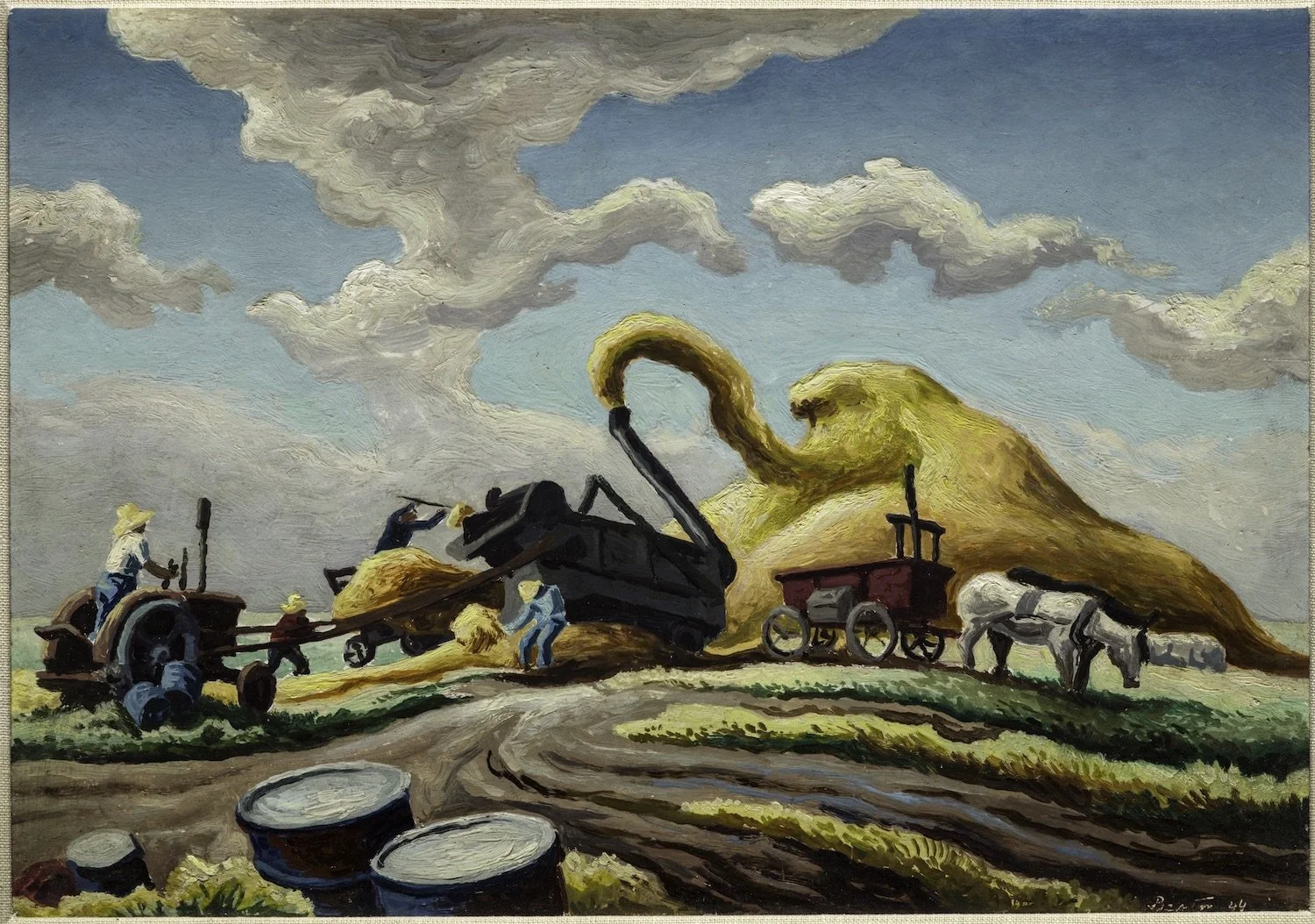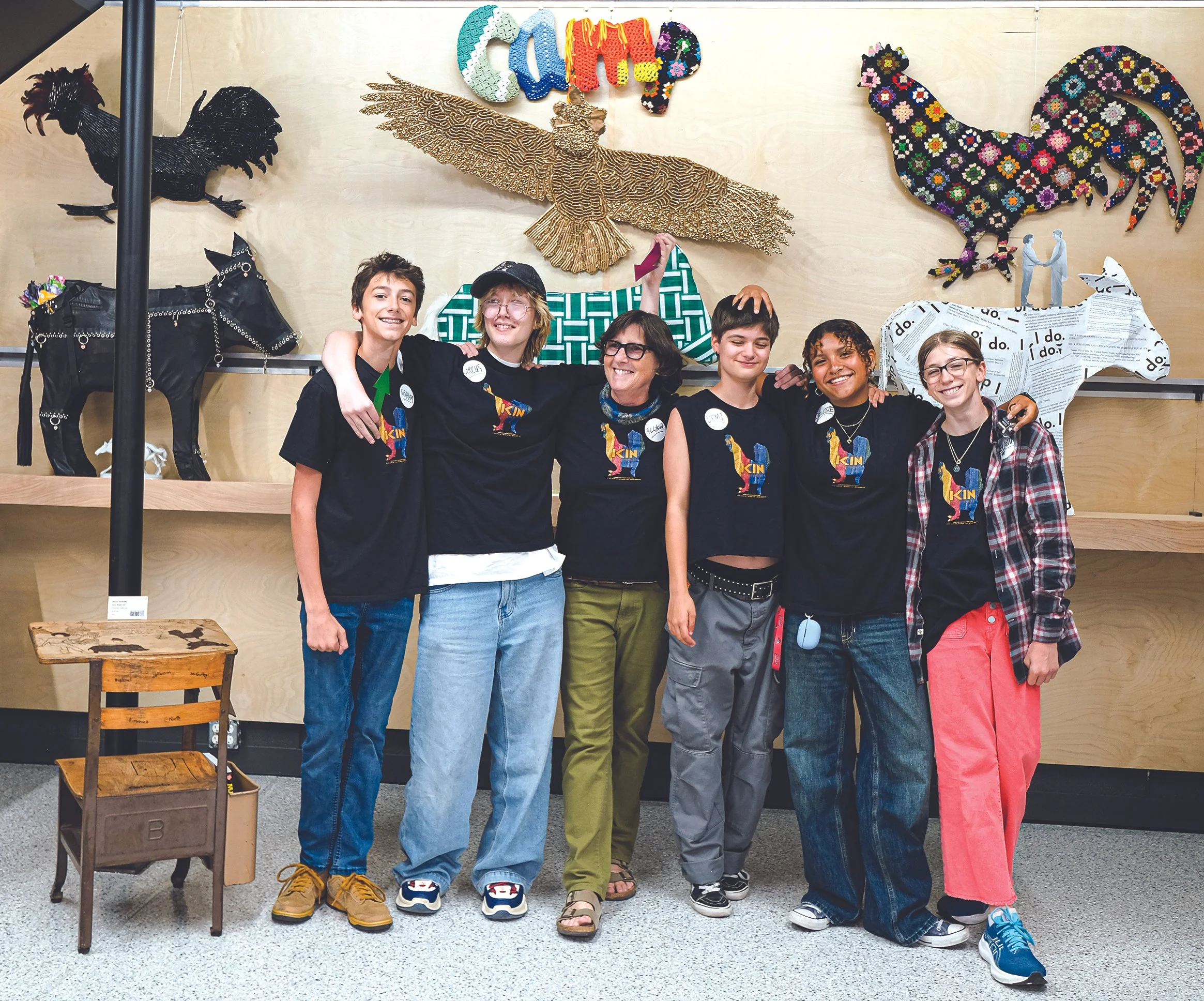Oracle
Oracle
Union Hall
1750 Wewatta Street, Suite 144, Denver, CO 80202
May 9–August 23, 2025
Admission: free
Review by Madeleine Boyson
The ritual is often the same, even if the modality is not: slow down, set an intention, and seek what you find. I am familiar with this practice after years of guided therapies, astrology readings, and tarot pulls. But I never quite get used to the fact that trusting my intuition works if I let it. It’s not surprising, then, that I felt that familiar doubt seep in right before encountering Oracle, an “experiential exhibition” on view at Denver’s Union Hall this spring. Could I trust my guides and my higher self, for my highest good? I would have to wait and see.
An installation view of the exhibition Oracle at Union Hall. Image by Raymundo Muñoz.
On view through August 23, Oracle presents fourteen works by Yazz Atmore, Faatma Be Oné, Linda Bishara, Rebecca Peebles, Sarah Tenney, and Harriet Woodman. Fiber and bead art braid with ceramics, digital collage, mixed media, and ephemera to invite “a receptive state of mind” and integrate viewers with themselves and the unseen, which are sometimes the same thing. [1] But chief curator Esther Hernandez intends more than to simply showcase work by exceptional artists, and therein lies the show’s intermediary powers. By offering Oracle as a trust-laden ritual that trespasses on traditional observation, Hernandez and her artists manifest a potent philter for accessing other realms.
Participants in the Guided Oracle Experience at Union Hall. Image by Raymundo Muñoz.
Visitors can view Oracle at any time during open hours, but the recommended Guided Oracle Experiences every Saturday offer “facilitated support.” In these sessions, blindfolded viewers are led around the gallery and invited to stand in front of each work to consider which object creates the most psychic pull. Viewers may then remove the blindfold and ponder their chosen work in light of a personal intention or question before wandering the gallery.
Installation view of (background left) Linda Bishara, Artificial Portals to Truth, 2025, ceramic stoneware, underglaze, glaze, and luster, 69 x 16 x 18 inches, and (foreground right) Harriet Woodman, Illumination, 2025, ink-style digital hand drawing, 36 x 36 inches. Image by Raymundo Muñoz.
Precision lighting makes an altar out of every artwork in Union Hall’s charcoal-drenched space. A contemplative playlist thrums the air and chatter leaks from the busy Coloradan building where the gallery is located. Trusting a stranger not to let you trip while blindfolded requires a particular courage, while ego disrupts the flow of any oracular encounter, if only to cast doubt on the logic behind perceived connections. Each component necessarily factors into the bodily exploration of Oracle.
Participants in the Guided Oracle Experience at Union Hall. Image by Raymundo Muñoz.
But in her accompanying exhibition text, Hernandez argues that these coincidences (or co-incidences) are perhaps the point. The confluence of many influences creates, as Carl Jung argued in his 1973 publication Synchronicity: An Acausal Connecting Principle, a means for “revealing insight not through cause and effect, but through resonance.” [2] By forfeiting hyper-independence to become a participant in the exhibition space, visitors of Oracle are better able to make meaning out of hidden truths. And the bodily performance of art becomes the portal itself—hand-in-hand with artist, artwork, curator, and exhibition. Good art is a somatic experience.
Linda Bishara, Visions of Ecstasy in the Palace of the Unknown, 2024, ceramic stoneware, underglaze, glaze, and luster, 26 x 17 x 12.5 inches. Image by Madeleine Boyson.
My own doubt is readily trounced by the synchronicity within Oracle. Upon arriving at my chosen work (known to me only as number ten), I instinctively feel the need to cry. Circling back to it later with my guide, I feel the pull again and remove my blindfold for Linda Bishara’s Visions of Ecstasy in the Palace of the Unknown (2024) to envelope me and tug at nostalgia.
A detail of Linda Bishara’s Visions of Ecstasy in the Palace of the Unknown, 2024, ceramic stoneware, underglaze, glaze, and luster, 26 x 17 x 12.5 inches. Image by Raymundo Muñoz.
The ceramic stoneware work epitomizes playfulness, as a Janus-faced, bubblegum-blowing girl presides over a dream-like shellscape in matte and glossy color. Undulating and hypnotizing with pigments and symbols, Visions of Ecstasy reflects the conversations I have recently had with my therapist about my inner child. The longer I stare, the more coincidences I can find.
Rebecca Peebles, The Nausea of Knowing Something Your Ego Does Not Want You to Know, from the Difficult States of Being beaded mask series, 2023, glass seed beads and Dyneema thread, 4.25 x 5.25 inches. Image by Raymundo Muñoz.
Nearby I find The Nausea of Knowing Something Your Ego Does Not Want You To Know (2023) by Rebecca Peebles, from the Difficult States of Being beaded mask series. Tongue out and eyes wide in lightly colored beads, Peebles’s beaded coyote jester invites viewers to listen “with our whole selves” to our intuitions and the “irrational intelligences of the body/mind connection.” [3] The work is subtle, yet jarring, as though the coyote’s third eye atop its head can connect with the viewer’s own just by looking.
Yazz Atmore, Breathe, 2024, digital collage, 24 x 36 inches. Image by Raymundo Muñoz.
Another artwork I feel a notable (though sightless) connection with is a digital collage by Yazz Atmore. Breathe (2024) (my number three) signals the connections between nature and the spiritual realm in vibrant leaves and a distant cityscape. At the center leans a blue figure adorned in gold who creates a pulsating movement throughout the work, pausing just long enough to be rendered amongst an entourage of leaves, fabric, and light.
Sarah Tenney, The Flight to Sanctuary, 2025, mixed media, 54 x 84 inches. Image by Madeleine Boyson.
Similarly collage-like though more tactile is Sarah Tenney’s Flight to Sanctuary (2025). Here two young children flee a cloud of clawing hands on the back of a grizzly bear, accompanied by a vase of pussy willows, a red lantern and two candles, and a pillow. Drawing on Jung’s “rebel” archetype, which embodies a rule-breaking attitude, Tenney bids viewers “to race toward those sacred ephemeral things that create meaning in our fleeting lives.” [4]
Faatma Be Oné, Re-Volve, 2025, mixed media, dimensions variable. Image by Raymundo Muñoz.
Faatma Be Oné similarly draws on archetypes, but leaves their interpretations up to the viewer. “These two divine beings are your reflection,” intones Be Oné about the glistening and masked figures in Re-Volve (2025). “Which one represents creation and which one represents destruction is up to you. Which one guides and which one cautions is up to you.” [5]
A detail view of Faatma Be Oné’s Re-Volve, 2025, mixed media, dimensions variable. Image by Raymundo Muñoz.
As though deities or oracles themselves, the figures wait amongst dried flowers, coins, stones, and beads for the energetic exchange of devotees who are invited to whisper or offer something of themselves in exchange for help or guidance.
Harriet Woodman, Ignite, 2025, ink-style digital hand drawing, 20 x 20 inches. Image by Madeleine Boyson.
And capping both the beginning and the end of the exhibition are the ink-style, digital works of Harriet Woodman. In Ignite (2025), kaleidoscopic, hand-drawn glyphs create a “visual hymn in the language of soul fire” that cultivate repetitive patterns into more than just decorative white lines on a black ground. Woodman’s work invites hypnotic close-looking that—like Atmore’s collages—pulses with unheard sound and dances with unseen movement.
An installation view of Oracle at Union Hall. Image by Raymundo Muñoz.
An enduring, yet surprising impression of Oracle is the emphatic message that not everything is for you. Those viewers who cannot dispense with their rational or logical brains may find Oracle challenging. Anyone who remains closed to the somatic properties of art, or who simply cannot abide by blindfolds, will not have a good time in this exhibition, or may only wish to see well-crafted artwork, without the added pressure of determining resonance with a stranger standing nearby. But this is yet another point that Oracle embodies: you will only receive that which you are receptive to, that which you ask for. We are marked by synchronicity in every artistic encounter, whether we are paying attention to it or not. Oracle simply asks, are you open to it?
Madeleine Boyson (she/her) is an Editorial Coordinator at DARIA and a Denver-based writer, poet, and artist. She holds a BA in art history and history from the University of Denver.
[1] From the accompanying exhibition text by Union Hall chief curator Esther Hernandez.
[2] Carl G. Jung, Synchronicity: An Acausal Connecting Principle, trans. R.F.C. Hull (Princeton University Press, 2010). Quote from the accompanying exhibition text by Union Hall chief curator Esther Hernandez in reference to Jung’s theory of synchronicity.
[3] From the artist statement and wall text.
[4] From the artist’s statement and wall text.




















